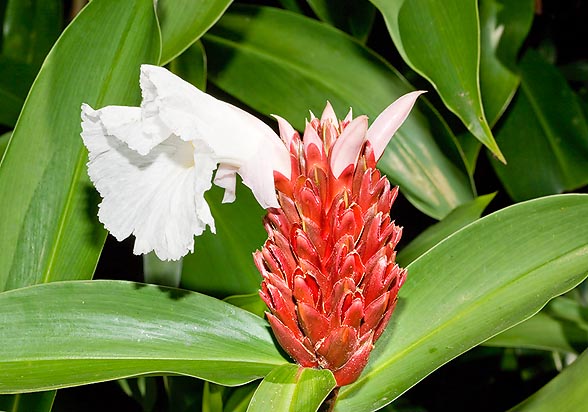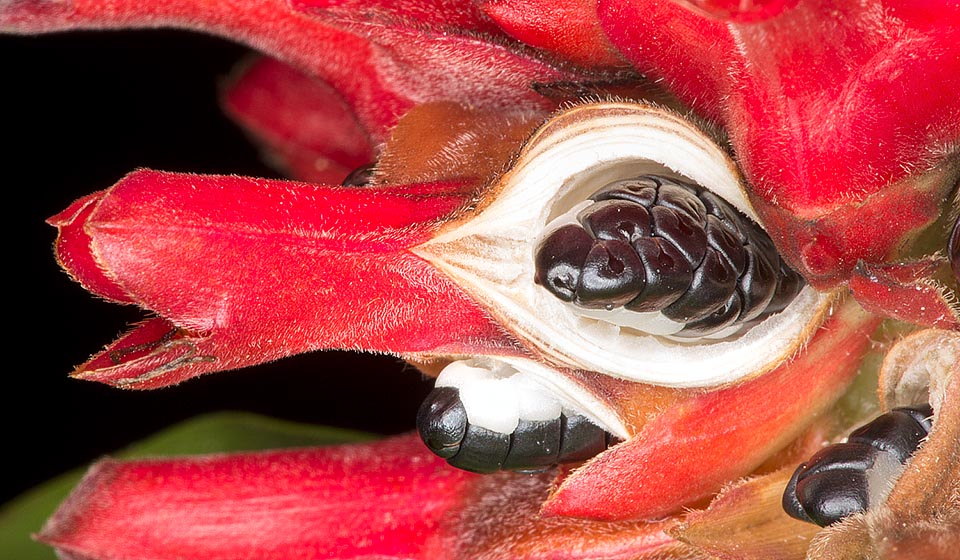Family : Costaceae

Text © Pietro Puccio

English translation by Mario Beltramini

Cane-shaped 3 m stems, showy leaves and long-lasting spectacular inflorescences © Giuseppe Mazza
The name of the genus comes from the combination of the Greek word “cheilos” = lip, and “costus”, genus in which the plant was previously inserted with the name of Costus speciosus, still widely utilized; the name of the species is the Latin word “speciosus” = beautiful, striking.
The most utilized common names are : “kustha”, “kashmira”, “kemuka”, “shura”, “pushkarmu- la” (Sanskrit); “keukand”, “keu”, “kust” (Hindi); “cane-reed”, “crepe-ginger”, “Malay ginger”, “wild ginger” (English); “gingembre crê- pe” (French); “Kreppingwer” (German); “Caña de la India” (Spanish).
Perennial herbaceous plant, rhizomatous, it shows thin stems similar to canes, tall up to three metres in the wild; the leaves, long about 30 cm and wide 7 cm, spirally arranged on the stem, are of a glossy dark green colour on the upper side, pubescent underneath. The terminal inflorescences, conical, long lasting, are thick spikes tall up to 15 cm, with several dark red coloured bracts, inside which come out showy flowers, with white corolla and white funnel-shaped labellum, 7 cm long and 8-10 cm wide, with a wrinkled margin. The fruits are globose red berries, 15 mm of diameter, containing small (about 3 mm), black coloured seeds. It reproduces easily by division and by cutting of the stem.
The plant is frequently cultivated in the tropical and subtropical countries, due to its showy inflorescences and the luxuriant vegetation; in some areas of origin, the rhizomes are also utilized in the traditional medicine. It needs a humid warm climate, partial shade and rich, draining, soils, to be kept humid during the vegetative period. It can be cultivated also outside from the tropical and subtropical climate zones, where, nevertheless, it has a more reduced size, as it can stand, at the level of the rhizome, temperatures up to -12°C; in such case it loses the aerial part every winter, but it vegetates again in spring.

The fruits are red globose berries of 15 mm of diameter containing small black seeds of about 3 mm © Giuseppe Mazza
→ To appreciate the biodiversity within the family COSTACEAE please click here.
